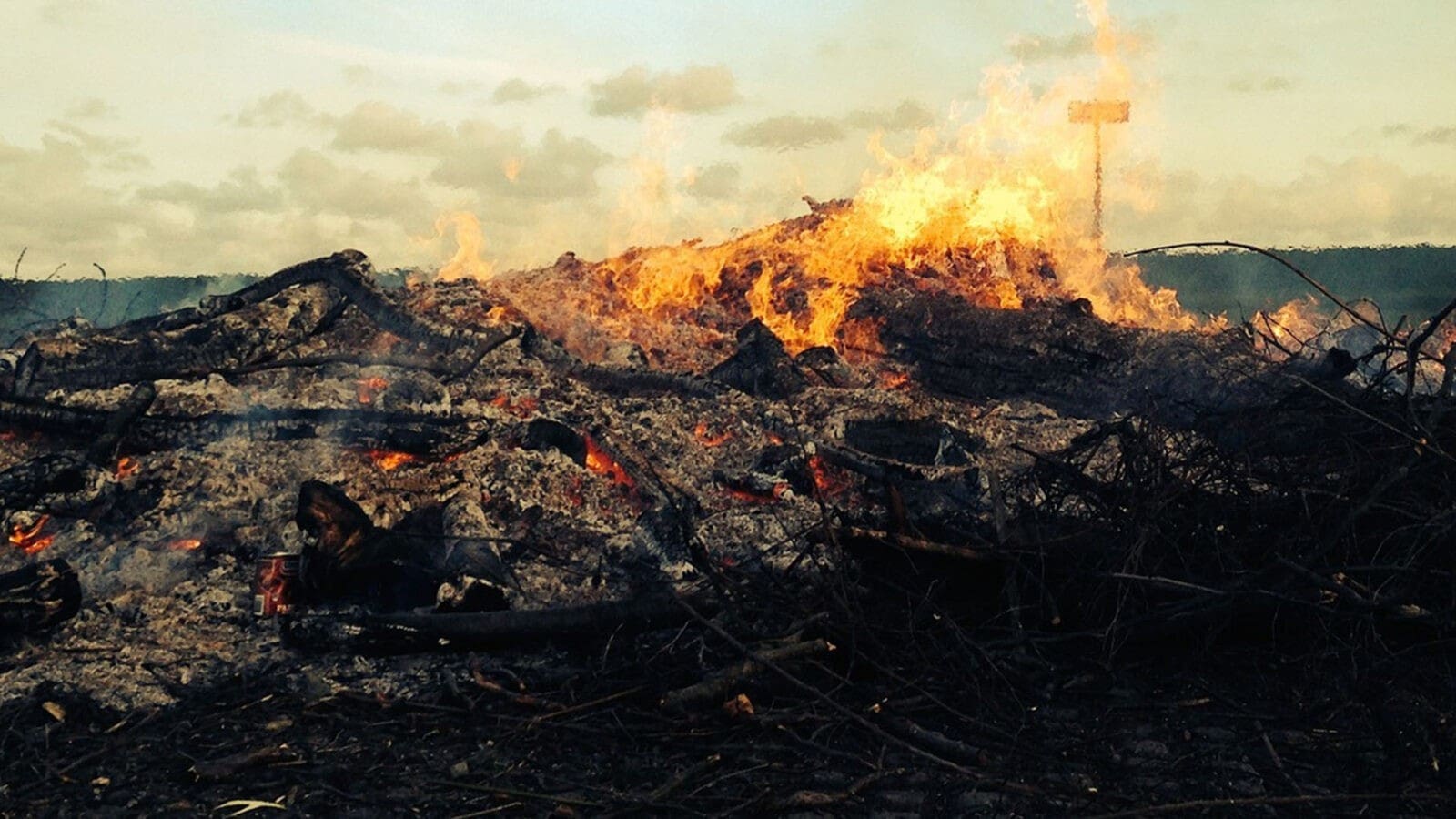
Burn Pit Exposure Claims
The military used burn pits in both Afghanistan and Iraq to dispose of most of their waste. Unfortunately, many hazardous substances and chemicals often ended up in these pits, and nearby servicemembers may have suffered respiratory damage from inhaling toxic fumes. This can leave a veteran with a disabling condition, oftentimes undiagnosed for many years, that may cause disabling conditions or even prevent them from working after discharge.
If you are suffering from a respiratory, heart, skin, or gastrointestinal disorder from being near a burn pit during active-duty service, you may have a valid claim for benefits from the VA. VetLaw’s team of dedicated attorneys can help you understand the requirements for burn pit exposure VA disability claims and assist you in the appeals process if you receive a denial from the VA for your veteran burn pit exposure claim.
Hazards Associated with Burn Pits
Burn pits are common on military bases in the Middle East. However, the VA admits that utilizing burn pits is a common practice and that it can have a negative effect on the health of anyone nearby. While the National Academies of Sciences and Engineering Medicine published a report in 2011 attributing ambient pollution as more of a threat than exposure to burn pits, the connection between the latter and certain health risks cannot be ignored.
It is not uncommon for former servicemembers who were exposed to burn pits to experience:
- Skin damage
- Eye damage
- Respiratory infections
- Heart disease
- Gastrointestinal damage
Any of these conditions may qualify a veteran for benefits as long as they are able to link their conditions to their time on active duty. In some cases, such as a diagnosis of irritable bowel syndrome, or IBS, simply showing that you were on active duty and stationed in the Southwest Asia theater of military operations is enough to prove exposure. With other disabilities, more detailed proof may be needed. A VA-accredited attorney can help veterans make this essential connection in burn pit exposure VA disability claims.
Connecting a Condition to Time on Active Duty
It is important to note that in most cases, merely showing that you suffer from one of the aforementioned conditions is not enough to qualify you for VA benefits. Having a disabling condition is only one part of what a former servicemember must prove in order to collect VA disability compensation benefits. For example, it is also crucial to point to a specific incident which took place during your active duty service that led to your current condition.
A veteran can usually refer to their service records for evidence of their base’s use of burn pits for waste disposal. However, some applicants may need to point to specific burn pits utilized by non-military personnel to establish this connection. VetLaw’s team of knowledgeable lawyers can help you gather evidence to validate burn pit exposure VA disability claims.
What Are Burn Pit Presumptive Conditions?
The VA assumes that certain medical conditions and disabilities are linked to specific circumstances of a veteran’s service in the military. If you are diagnosed with a condition that is considered a “presumptive condition,” you may qualify for VA disability benefits without needing to prove the medical nexus – or connection – between your condition and an in-service stressor.
There is a long list of presumptive conditions for burn pit exposure. You may qualify to file streamlined burn pit VA disability claims if you experience any of the following conditions:
- Asthma. This chronic medical condition, which causes a narrowing of the airways and excess production of mucus, is common for veterans who were exposed to burn pits during their service. Toxic compounds present in burn pit fumes may cause or aggravate upper and lower airways diseases, and the VA recognizes asthma as one of these conditions. Veterans who were diagnosed with this condition after their service qualify for presumptive disability benefits.
- Cancers. The VA recognizes a range of cancers in their presumptive conditions list, including brain cancer, respiratory cancer of any kind, lymphoma, pancreatic cancer, and melanoma, among others. There is an abundance of evidence suggesting that pollutants in burn pit smoke may cause cancer, but further study is needed to confirm this connection.
- Bronchitis and Bronchiolitis. These infections of the lung develop over time due to exposure to irritants, causing painful inflammation and swelling.
- Chronic rhinitis and chronic sinusitis. These chronic conditions can cause problems with veterans’ respiratory tract and can be triggered by exposure to burn pit fumes.
- Chronic obstructive pulmonary disease (COPD). This group of diseases affects millions of people, causing airflow blockage and breathing-related issues. COPD is often caused by long-term exposure to certain substance and can lead to an increased risk of developing other serious conditions like heart disease or lung cancer.
For the full list of presumptive conditions for burn pits, consider consulting the VA’s website or speak with your VA disability attorney. With so many conditions included within this list, it is important to understand how presumptive service connections impact your eligibility for disability benefits.
What Is the Burn Pit VA Disability Rating or Percentage?
After you file a burn pit VA disability claim, the VA will evaluate the nature and severity of your symptoms to assign you a disability rating for your condition. This rating can range from 0% to 100%, increasing in increments of 10. The VA will then use this disability rating to determine your compensation rate and eligibility for additional VA benefits. Your burn pit VA disability rating will be calculated depending on the following schedule of ratings:
- Asthma. Rated under Diagnostic Code 6602, asthma will be rated either 10, 30, 60, or 100 percent based on the results of a Forced Expiratory Volume test and Forced Vital Capacity test.
- Cancers. The VA typically rates cancers at 100% while active and for 6 months following the completion of a successful treatment program. After this six month period, the VA will re-evaluate the status of your condition to assign a new rating.
- Bronchitis and Bronchiolitis. Based on Diagnostic Codes 6600 and 6601, a rating of 10, 30, 60, or 100 percent will be awarded for both conditions based on the results of spirometry tests and symptomatology.
- Chronic rhinitis and chronic sinusitis. Chronic rhinitis caused by burn pits are rated using Diagnostic Codes 6522 through 6524 depending on the type of rhinitis you experience. Allergic or vasomotor rhinitis will be rated either 10 or 30 percent, while bacterial rhinitis can have a rating of 10 or 50 percent. Sinusitis, rated under Diagnostic Codes 6510 through 6514 will be rated either 0, 10, 30, or 50 percent based on the number of incapacitating episodes you experience per year and whether you have had radical surgery to cope with the condition.
- Chronic obstructive pulmonary disease. According to Diagnostic Code 6604, a veteran will be assigned a rating of 10, 30, 60, or 100 percent based on the severity of their symptoms and the results of the 6 minute walk test.
How Did the PACT Act Change Burn Pit Presumptives?
Passed in 2022, the PACT Act expanded benefits and services for veterans who were exposed to toxic substances such as burn pits. This law added 23 new presumptive conditions related to burn pit exposure, representing an important extension of eligibility to veterans who were affected by these toxic fumes. Now, if you suffer from any of the new presumptive conditions included in the PACT Act expansion, you can file a burn pit VA disability claim without providing evidence of a medical nexus between your condition and an in-service event, illness, or injury.
The law also provided for the establishment of over 30 medical clinics across the country for veterans with potential toxic exposure. These clinics represent an effort to take a more protective approach to screening and treating potential toxic exposures. Overall, the PACT Act established important protections for veterans of the post 9-11 era who developed disabilities due to the hazardous substances and chemicals associated with burn pits.
What If You Have a Condition that Is Not On the Burn Pit Presumptive List?
If you have a condition that is not on the burn pit presumptive list, you may still be entitled to VA disability benefits. To secure this compensation, however, you must provide evidence of the following:
- A diagnosis of an illness or health condition
- The occurrence of an in-service event, illness or injury
- A nexus, or connection, between your condition and the in-service event, illness, or injury
Do not feel discouraged if your condition is not yet listed on the burn pit presumptive list. The VA recognizes a vast list of disabling conditions, and you are likely still eligible for compensation based on your symptoms. Your attorney will work with you to complete and file your burn pit VA disability claim or navigate the appeals process if you have been wrongfully denied the benefits you deserve.
An Attorney Can Help Appeal Denied Burn Pit Exposure VA Disability Claims
Veterans who were injured while serving the United States military deserve compensation for their disabling conditions, and environmental hazards which lead to diseases or disorders are just as serious as wounds caused by gunfire or explosions. Open burn pits are just one example of the environmental hazards that are inherent to military service, and they have the potential to release millions of particles into the air that can affect your lungs, heart, eyes, and skin.
If these problems continue to affect you after your discharge, you may have the right to VA disability compensation benefits. Contact a VA-accredited lawyer today to learn more about burn pit exposure claims or to file an appeal if you have been denied.



